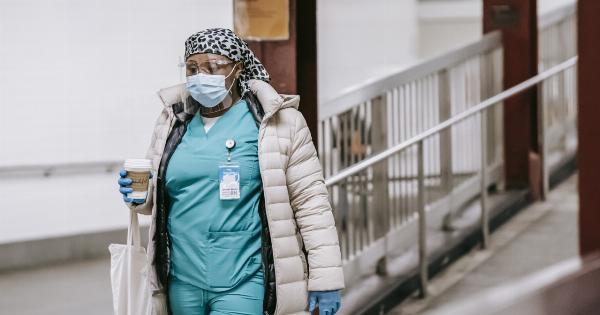The Kronovirus or COVID-19 has impacted millions of people worldwide since its outbreak in December 2019. The virus originated from Wuhan, China, and has rapidly spread across the globe, causing widespread panic and chaos.
Governments worldwide have taken several measures to prevent the spread of the virus, including lockdowns, social distancing, and compulsory masking. In this article, we will discuss whether these measures are enough to protect us from the virus or not.
What is the Kronovirus?
The Kronovirus, also known as COVID-19, is a respiratory illness that spreads through respiratory droplets when an infected person talks, coughs, or sneezes.
The symptoms of the virus range from mild fever and cough to severe respiratory illness, pneumonia, and even death. The virus is highly contagious and has a high transmission rate, making it easy for it to spread among individuals and communities. The virus primarily affects people with underlying health conditions, the elderly and immunocompromised individuals.
Measures to Shield Against Kronovirus
As mentioned, governments and health agencies have taken several measures to prevent the spread of the virus. Some of these measures include:.
1. Lockdowns
A lockdown is a restriction on individuals or communities’ movement to prevent the spread of the virus.
Governments worldwide have imposed lockdowns at different stages of the pandemic to break the chain of transmission and prevent the healthcare system’s saturation. The lockdowns have also been enforced to prevent overcrowding and maintain social distancing measures.
2. Social Distancing
Social distancing is a measure to prevent physical interaction and maintain distance between individuals to prevent the spread of the virus.
Governments have encouraged individuals to maintain a distance of at least 6 feet from each other to reduce the risk of transmission. Social distancing measures have been enforced in public places, workplaces, and schools worldwide.
3. Masking
Masks have been mandatory in public places worldwide to prevent the spread of the virus. Masks prevent respiratory droplets from being dispersed in the environment when an infected person talks, coughs, or sneezes.
Masks also reduce the risk of getting infected by preventing respiratory droplets from reaching the nose and mouth.
4. Hand Hygiene
Hand hygiene is one of the essential measures to prevent the spread of the virus. Cleaning hands frequently with soap and water or using alcohol-based hand sanitizers can reduce the risk of getting infected.
Governments and health agencies have encouraged individuals to maintain hand hygiene to prevent the spread of the virus.
Are These Measures Enough?
Although governments and health agencies worldwide have taken several measures to prevent the spread of the virus, the question remains, are these measures enough to protect us? The simple answer is, no.
Despite the measures, the virus continues to spread worldwide, affecting millions of people. The measures are crucial and effective to reduce the risk of transmission, but they are not enough.
1. Lack of Consistency
The measures implemented by governments worldwide lack consistency. In some countries, masks are mandatory, while in others, they are not. Some countries have imposed strict lockdowns, while others have imposed partial lockdowns.
The lack of consistency has led to confusion and non-adherence to the measures.
2. Herd Immunity
Many individuals worldwide have advocated for herd immunity as a measure to prevent the spread of the virus. However, this approach can be dangerous, and health agencies do not recommend it.
Herd immunity occurs when a significant percentage of the population is infected or vaccinated, preventing the spread of the virus. However, this approach can lead to several deaths and complications, particularly among individuals with underlying health conditions.
3. New Variants
The new variants of the virus, particularly the Delta variant, have posed a significant threat to the measures taken to prevent the spread of the virus.
The Delta variant is more transmissible than the previous variants, leading to rapid spread among individuals and communities. The measures taken may not be enough to prevent the spread of the new variants.
4. Non-Adherence
The most significant challenge faced by governments in the prevention of the spread of the virus is non-adherence to the measures. Individuals worldwide fail to adhere to the measures, leading to the spread of the virus.
The non-adherence is due to misinformation, fatigue, or non-compliance. The lack of adherence to the measures makes them ineffective in preventing the virus’s spread.
Conclusion
In conclusion, the measures taken to prevent the spread of the Kronovirus are essential but not enough. The lack of consistency, herd immunity, new variants, and non-adherence are significant challenges in preventing the spread of the virus.
Individuals worldwide must adhere to the measures to prevent the spread of the virus and protect themselves and their communities.






























